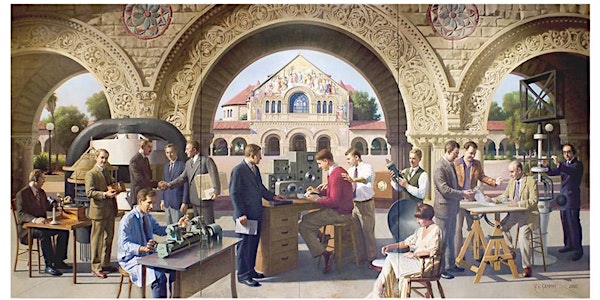
The Origins of Silicon Valley: Why and How It Happened Here
Date and time
Location
Cubberley Auditorium
485 Lasuen Mall Stanford, CA 94305Description
The general admission tickets are sold out. A small number of SHS members only tickets are still available. The video of this program will be accessible online at the Stanford Historical Society youtube playlist in mid-May.
Presenter: Paul Wesling, Stanford ’66 (BSEE) and ’68 (MS-MatSci), IEEE Life Fellow and Distinguished Lecturer
Silicon Valley is known to be unique, with its wealth of technology companies and different style of management. Why did Silicon Valley come into being? According to Paul Wesling, the story goes back to local Hams (amateur radio operators) trying to break RCA's tube patents, early Stanford engineers, the sinking of the Titanic, Naval ship communications requirements, early “angel” investments, Fred Terman and Stanford University, local invention of high-power tubes (gammatron, klystron), WWII and radar, new approaches to running companies, and the San Francisco Bay Area infrastructure. These factors pretty much determined that the semiconductor and integrated circuit industries would be located in the Santa Clara Valley.
As we explore this exciting history of device technology development and innovation from 1909 through 1960, you will "meet" some of the colorful characters--Cyril Elwell, Lee DeForest, Bill Eitel, Charles Litton, Fred Terman, David Packard, Bill Hewlett and others--who set leadership patterns for the worldwide electronics industries through their inventions, process development, and allied management techniques. You will also learn about some current local organizations and movements, including Maker Faire and MeetUps, that keep alive the spirit of the radio Hams and the Homebrew Computer Club, where geeks gather to start new companies that invent the future.
Organized by
Founded in 1976, the Stanford Historical Society (SHS) welcomes anyone with or without Stanford affiliation to join as a member. The society provides its members and supporters access to authentic Stanford stories, offering opportunities for preserving and sharing the university’s legacy and celebrating its history.